She was born in 1877 in Zaandam, in the province of North Holland. When she was 16, *Geesje Kwak (a name perhaps as unlikely-sounding to Dutch ears as it is to other languages) moved with her sister Anna to Amsterdam to settle into the safe young ladies' profession of milliner. There, among the ladies' hats and bonnets, ribbons and bustling clients, she might have remained in obscurity, her name - and her features - unknown to art history. Except that one day her path crossed that of the artist George Hendrik Breitner.
 Breitner, already something of a name in the art world of the time, had recently acquired a studio on Amsterdam's Lauriergracht (Laurel Canal); one of the prettiest parts of the city. In 1892 the artist had visited an influential exhibition of Japanese art in The Hague (which style had earlier inspired Vincent van Gogh, among others), and he had enthusiastically acquired several kimonos and some decorative room screens as a result.
Breitner, already something of a name in the art world of the time, had recently acquired a studio on Amsterdam's Lauriergracht (Laurel Canal); one of the prettiest parts of the city. In 1892 the artist had visited an influential exhibition of Japanese art in The Hague (which style had earlier inspired Vincent van Gogh, among others), and he had enthusiastically acquired several kimonos and some decorative room screens as a result.
 Now a year later, the artist's chance meeting with the young milliner seems to have lit a spark of inspiration, and Geesje found herself being asked - on a paid professional basis - to pose as a model in the kimonos. Breitner, then 36, seems to have been meticulous about details. There is an existing notebook in which he recorded the various dates and hours when Geesje posed for him, and the amounts which she was paid for her time.
Now a year later, the artist's chance meeting with the young milliner seems to have lit a spark of inspiration, and Geesje found herself being asked - on a paid professional basis - to pose as a model in the kimonos. Breitner, then 36, seems to have been meticulous about details. There is an existing notebook in which he recorded the various dates and hours when Geesje posed for him, and the amounts which she was paid for her time.
 The notebook suggests a methodical, business-like approach to the model sessions, but the series of paintings which resulted makes it plain that Geesje had something - an x-factor - which tapped into a true well of inspiration for the artist. Breitner's brushwork in the canvasses shows extraordinary verve and confidence, as if nowhere was it necessary to go over the same brushstroke twice. They are images which indicate that the artist knew exactly where he needed to go to achieve the result required, and what he needed to do to get there.
The notebook suggests a methodical, business-like approach to the model sessions, but the series of paintings which resulted makes it plain that Geesje had something - an x-factor - which tapped into a true well of inspiration for the artist. Breitner's brushwork in the canvasses shows extraordinary verve and confidence, as if nowhere was it necessary to go over the same brushstroke twice. They are images which indicate that the artist knew exactly where he needed to go to achieve the result required, and what he needed to do to get there.
 Posed either in a red or in a silvery-white kimono, Geesje is there in the canvasses as a tangible presence, even when only her face and her hands are visible. Breitner never allows that presence to be swamped by the surrounding patterns of cherry blossoms, birds, carpets and room screens which swirl busily around her; the balance between the naturalistic treatment of the model and the eddying patterns is always perfectly maintained.
Posed either in a red or in a silvery-white kimono, Geesje is there in the canvasses as a tangible presence, even when only her face and her hands are visible. Breitner never allows that presence to be swamped by the surrounding patterns of cherry blossoms, birds, carpets and room screens which swirl busily around her; the balance between the naturalistic treatment of the model and the eddying patterns is always perfectly maintained.
 Always a restless innovator, Breitner made extensive use of the relatively new medium of photography as a tool, and built up his own reference library of photographs of the subjects which became his principal themes. It is thanks to the artist's embracing of this medium that we have so many views of the Amsterdam of the time, not just as it was, but as it was in the process of becoming, with building works in progress and tramlines (for horse-drawn trams) being laid down. And indeed; among his collection we also come across his photographs of Geesje, some of which (below) are clearly intended as references for his paintings.
Always a restless innovator, Breitner made extensive use of the relatively new medium of photography as a tool, and built up his own reference library of photographs of the subjects which became his principal themes. It is thanks to the artist's embracing of this medium that we have so many views of the Amsterdam of the time, not just as it was, but as it was in the process of becoming, with building works in progress and tramlines (for horse-drawn trams) being laid down. And indeed; among his collection we also come across his photographs of Geesje, some of which (below) are clearly intended as references for his paintings.
 One photograph by Breitner in the Leiden Museum print collection (below) shows a thoughtful Geesje posing hand-on-chin. This gelatine-silver print offers us perhaps our clearest look at the girl who inspired the artist. I wonder sometimes what she must have thought about it all. Was she bemused? Was she flattered by the unexpected attention? In any event, she did not feature further in Breitner's work. There are two reasons for this.
One photograph by Breitner in the Leiden Museum print collection (below) shows a thoughtful Geesje posing hand-on-chin. This gelatine-silver print offers us perhaps our clearest look at the girl who inspired the artist. I wonder sometimes what she must have thought about it all. Was she bemused? Was she flattered by the unexpected attention? In any event, she did not feature further in Breitner's work. There are two reasons for this.
 The first reason is that, incomprehensibly, the series of paintings featuring Geesje met with either an indifferent or a scoffing critical reception when they were exhibited. The critical reaction was cold enough, apparently, to discourage the artist further in this direction, and he went on to other themes and subjects. The second reason is Geesje herself. Two years later she emigrated with her older sister Niesje to Pretoria in South Africa.
The first reason is that, incomprehensibly, the series of paintings featuring Geesje met with either an indifferent or a scoffing critical reception when they were exhibited. The critical reaction was cold enough, apparently, to discourage the artist further in this direction, and he went on to other themes and subjects. The second reason is Geesje herself. Two years later she emigrated with her older sister Niesje to Pretoria in South Africa.
 We have one last spectral glimpse of Geesje (above), together with her older sister, taken by a professional photographic studio in Pretoria. Just two years after the photograph was taken, Geesje died before reaching her 22nd birthday. The canvasses which are her legacy are now prized among the museum collections which house them, and the one which is now in a private collection reached an auction price in 2003 of almost *€600,000.
We have one last spectral glimpse of Geesje (above), together with her older sister, taken by a professional photographic studio in Pretoria. Just two years after the photograph was taken, Geesje died before reaching her 22nd birthday. The canvasses which are her legacy are now prized among the museum collections which house them, and the one which is now in a private collection reached an auction price in 2003 of almost *€600,000.

Artist: George Hendrik Breitner
Works: Girl in a Kimono (Geesje Kwak)
Medium: Oils
Locations (from the top): Stedelijk Museum, Amsterdam (1893). Gemeentemuseum, The Hague (1893). Private Collection (1893). Enschede Museum (1894). Rijksmuseum, Amsterdam (1894).
Source: George Hendrik Breitner, 1857-1923: schilderijen, tekeningen, foto's, by J.F. Heijbroek, Kees Keyer, et al. Uitgeverij Thoth, Bussum, 1994.
*Curiously (and perhaps ironically), when given its correct Dutch pronunciation, the name actually sounds like the word 'geisha'.
 Breitner, already something of a name in the art world of the time, had recently acquired a studio on Amsterdam's Lauriergracht (Laurel Canal); one of the prettiest parts of the city. In 1892 the artist had visited an influential exhibition of Japanese art in The Hague (which style had earlier inspired Vincent van Gogh, among others), and he had enthusiastically acquired several kimonos and some decorative room screens as a result.
Breitner, already something of a name in the art world of the time, had recently acquired a studio on Amsterdam's Lauriergracht (Laurel Canal); one of the prettiest parts of the city. In 1892 the artist had visited an influential exhibition of Japanese art in The Hague (which style had earlier inspired Vincent van Gogh, among others), and he had enthusiastically acquired several kimonos and some decorative room screens as a result. Now a year later, the artist's chance meeting with the young milliner seems to have lit a spark of inspiration, and Geesje found herself being asked - on a paid professional basis - to pose as a model in the kimonos. Breitner, then 36, seems to have been meticulous about details. There is an existing notebook in which he recorded the various dates and hours when Geesje posed for him, and the amounts which she was paid for her time.
Now a year later, the artist's chance meeting with the young milliner seems to have lit a spark of inspiration, and Geesje found herself being asked - on a paid professional basis - to pose as a model in the kimonos. Breitner, then 36, seems to have been meticulous about details. There is an existing notebook in which he recorded the various dates and hours when Geesje posed for him, and the amounts which she was paid for her time. The notebook suggests a methodical, business-like approach to the model sessions, but the series of paintings which resulted makes it plain that Geesje had something - an x-factor - which tapped into a true well of inspiration for the artist. Breitner's brushwork in the canvasses shows extraordinary verve and confidence, as if nowhere was it necessary to go over the same brushstroke twice. They are images which indicate that the artist knew exactly where he needed to go to achieve the result required, and what he needed to do to get there.
The notebook suggests a methodical, business-like approach to the model sessions, but the series of paintings which resulted makes it plain that Geesje had something - an x-factor - which tapped into a true well of inspiration for the artist. Breitner's brushwork in the canvasses shows extraordinary verve and confidence, as if nowhere was it necessary to go over the same brushstroke twice. They are images which indicate that the artist knew exactly where he needed to go to achieve the result required, and what he needed to do to get there. Posed either in a red or in a silvery-white kimono, Geesje is there in the canvasses as a tangible presence, even when only her face and her hands are visible. Breitner never allows that presence to be swamped by the surrounding patterns of cherry blossoms, birds, carpets and room screens which swirl busily around her; the balance between the naturalistic treatment of the model and the eddying patterns is always perfectly maintained.
Posed either in a red or in a silvery-white kimono, Geesje is there in the canvasses as a tangible presence, even when only her face and her hands are visible. Breitner never allows that presence to be swamped by the surrounding patterns of cherry blossoms, birds, carpets and room screens which swirl busily around her; the balance between the naturalistic treatment of the model and the eddying patterns is always perfectly maintained. Always a restless innovator, Breitner made extensive use of the relatively new medium of photography as a tool, and built up his own reference library of photographs of the subjects which became his principal themes. It is thanks to the artist's embracing of this medium that we have so many views of the Amsterdam of the time, not just as it was, but as it was in the process of becoming, with building works in progress and tramlines (for horse-drawn trams) being laid down. And indeed; among his collection we also come across his photographs of Geesje, some of which (below) are clearly intended as references for his paintings.
Always a restless innovator, Breitner made extensive use of the relatively new medium of photography as a tool, and built up his own reference library of photographs of the subjects which became his principal themes. It is thanks to the artist's embracing of this medium that we have so many views of the Amsterdam of the time, not just as it was, but as it was in the process of becoming, with building works in progress and tramlines (for horse-drawn trams) being laid down. And indeed; among his collection we also come across his photographs of Geesje, some of which (below) are clearly intended as references for his paintings. One photograph by Breitner in the Leiden Museum print collection (below) shows a thoughtful Geesje posing hand-on-chin. This gelatine-silver print offers us perhaps our clearest look at the girl who inspired the artist. I wonder sometimes what she must have thought about it all. Was she bemused? Was she flattered by the unexpected attention? In any event, she did not feature further in Breitner's work. There are two reasons for this.
One photograph by Breitner in the Leiden Museum print collection (below) shows a thoughtful Geesje posing hand-on-chin. This gelatine-silver print offers us perhaps our clearest look at the girl who inspired the artist. I wonder sometimes what she must have thought about it all. Was she bemused? Was she flattered by the unexpected attention? In any event, she did not feature further in Breitner's work. There are two reasons for this. The first reason is that, incomprehensibly, the series of paintings featuring Geesje met with either an indifferent or a scoffing critical reception when they were exhibited. The critical reaction was cold enough, apparently, to discourage the artist further in this direction, and he went on to other themes and subjects. The second reason is Geesje herself. Two years later she emigrated with her older sister Niesje to Pretoria in South Africa.
The first reason is that, incomprehensibly, the series of paintings featuring Geesje met with either an indifferent or a scoffing critical reception when they were exhibited. The critical reaction was cold enough, apparently, to discourage the artist further in this direction, and he went on to other themes and subjects. The second reason is Geesje herself. Two years later she emigrated with her older sister Niesje to Pretoria in South Africa. We have one last spectral glimpse of Geesje (above), together with her older sister, taken by a professional photographic studio in Pretoria. Just two years after the photograph was taken, Geesje died before reaching her 22nd birthday. The canvasses which are her legacy are now prized among the museum collections which house them, and the one which is now in a private collection reached an auction price in 2003 of almost *€600,000.
We have one last spectral glimpse of Geesje (above), together with her older sister, taken by a professional photographic studio in Pretoria. Just two years after the photograph was taken, Geesje died before reaching her 22nd birthday. The canvasses which are her legacy are now prized among the museum collections which house them, and the one which is now in a private collection reached an auction price in 2003 of almost *€600,000.
Artist: George Hendrik Breitner
Works: Girl in a Kimono (Geesje Kwak)
Medium: Oils
Locations (from the top): Stedelijk Museum, Amsterdam (1893). Gemeentemuseum, The Hague (1893). Private Collection (1893). Enschede Museum (1894). Rijksmuseum, Amsterdam (1894).
Source: George Hendrik Breitner, 1857-1923: schilderijen, tekeningen, foto's, by J.F. Heijbroek, Kees Keyer, et al. Uitgeverij Thoth, Bussum, 1994.
*Curiously (and perhaps ironically), when given its correct Dutch pronunciation, the name actually sounds like the word 'geisha'.
*$818,700



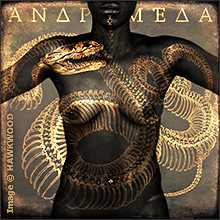
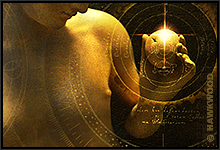




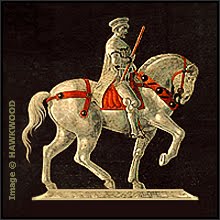
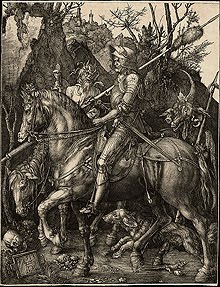
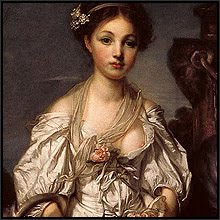










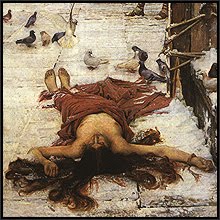

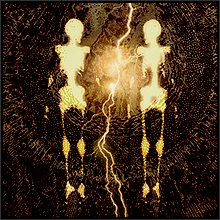
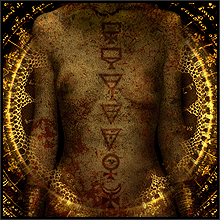
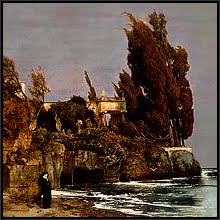
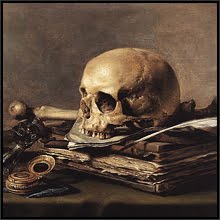
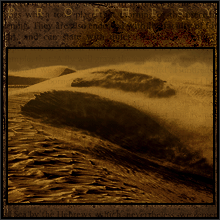

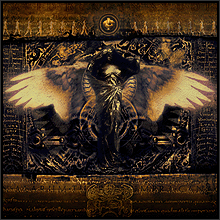

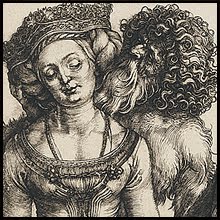
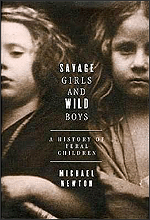

Oh, Maestro, you brought tears to my eyes…such an inspiring story. These paintings always mesmerize me. She seems so gracious, melancholic and tranquil like she carries knowledge beyond our world, I feel like I see a little girl’s face but I sense an old soul presence
ReplyDeleteThank you, Lolita! I think that it was Breitner's genius that both recognised and captured that 'old soul' in Geesje. The first painting in this series (the one in the Stedelijk Museum) strikes me as particularly prescient - almost eirily so.
ReplyDeletewow. I am so happy I found this site. Thank you so much for all this information and wow. This story of Geesje is so touching! :( Do you know why she died?
ReplyDeleteAleksa, I'm so pleased that you enjoy my blog! I'm afraid I Haven't been able to trace any further reasons for the cause of Geesje's early death. Hers is a poignant story indeed. It touched me to write this post as much as Breitner's paintings themselves.
ReplyDeleteGeesje Kwak sounds very Dutch! Thanx for your story on her!
ReplyDeleteM dohle, Holland
I'm pleased that you enjoyed reading about Geesje, Max. Her story is indeed a poignant one.
DeleteI commend this most interesting and sympathetic tale. I can add a few more details.
ReplyDeleteIn 1895 the three Kwak sisters, Anna (born 1873), Geesje (1877-1899) and Niesje (1879-1911) emigrated to South Africa for health reasons (tuberculosis).
Anna became homesick and returned to Holland where she died. The date of her death is not known but she was young when she died of tuberculosis.
Geesje died in Pretoria in 1899 of typhoid fever during the Boer War when Pretoria was besieged by the British Forces. The situation in Pretoria during this period was very bad.
[Niesje, who married Cornelis Jacobus Swierstra (1874-1952) in 1900, was my great-grandmother.]
See also: http://nl.wikipedia.org/wiki/Geesje_Kwak
Many thanks, Anon. for providing this extra information. The story of Geesje and her sisters is such a touching one, and that you are related to the sister who survived her makes these events very immediate!
DeleteI live in Amsterdam and for me Geesje Kwak is the Dutch Mona Lisa. Right now there is an exhibition in our Rijksmuseum where they brought all the paintings of Geesje and Anna together. In our City Archive I found the following information about the family Kwak: In 1880 came from Zaandam to Amsterdam, Jan Kwak (1843-1913) his wife Willempje Posch (1847-1893) and their children Arend (1871-1960), Anna (1873-1939), Geesje (1877-1899) and Niesje (1879-1911). In Amsterdam where born Gerrit (1881, who died the same year) and Aafje (1882-1905). In 1895 Geesje and Niesje emigrated to South-Africa. In 1903 also Aafje left to South-Africa, but she came back 17 months later. Anna Kwak married bread baker Jan Wolthuis, they adopted a child (Antonia Brico) and emigrated to San Francisco. Antonia Brico (1902-1989) was later a famous conductor. Brother Arend Kwak stayed in Amsterdam, his job was bread baker, he married and got 7 children. Im very interested to know how Geesje was doing from 1895 till 1899 in Pretoria. Wat work was she doing there? Did she had a fiance? Wathever. Any information is more then welcome.
ReplyDeleteThank you for the information, Richard. I hope perhaps to get to the exhibition myself - and it would indeed be interesting to turn up any further information about Geesje.
DeleteHello Richard and Hawkwood
ReplyDeleteThank you for the additional information about members of the Kwak family. This has filled in some gaps on the Dutch side.
Unfortunately I cannot add to my Jan 9 2015 post on Geesje Kwak. As far as I know Geesje was staying with my great-grandmother Niesje. Geesje never married.
I hope you can open the link I have included to the better version of the photo showing the two sisters, Geesje Kwak (1877-1899) and Niesje Kwak (1879-1911). After checking with relatives, I believe Geesje is on the left, in front of Niesje on the right.
http://www.pixhoster.info/f/2016-03/96c75c0226b97a7fb128c6884cdf64cb.jpg
Hello, I found this site before, but never read the comments, thanks Anonymus and Richard for your extra information about Geesje Kwak - I'm writing a novel about Geesje and Breitner so to say biografical fiction. Fiction between facts, I'm desperate for more information, for example why would these young girls have emigrated to South Africa. Is it possible that they knew Cornelis Swierstra already from Amsterdam and followed him?
ReplyDeleteMarjet
ReplyDeleteThere is a lot of information on Geesje Kwak (1877-1899) in the publication 'Breitner Girl in a Kimono' put out in 2016 by the Rijksmuseum and is worthwhile reading. https://www.rijksmuseum.nl/en/breitner
Geesje's younger sister was Niesje Kwak (1879-1911) whose husband, Cornelis Jacobus Swierstra (1874-1952) studied entomology at the University of Amsterdam. He moved to South Africa in 1894 and later became Director of the Transvaal Museum 1922-1946. I don't know if the sisters know him when they migrated a year later in 1895. The father of Cornelis was a shopkeeper in Amsterdam.
I hope your novel comes to fruition.
Alan
Thanks Alan, I read everything there is online and in the books published. But I'm of course desperate to know unexpected details. Are you still living in South Africa?
DeleteAlan, Cornelis Jacobus Swierstra I was led to believe, studied entomology at the University of Heidelberg!
DeleteBelow is a link to the 1897 portrait of the sisters Geesje and Niesje Kwak, which I had restored from the original photo and added text for identification.
ReplyDeleteThe portrait is mentioned in the De Spectator 5 August 1911 obituary of my great-grandmother Niesje:
"Geboren in Holland, 32 jaren geleden, kwam zij met hare zuster op jeugdige leefdijd naar Zuid Africa. Hoewel niet fors gebouwd zagen de beide jonge zusters er zodanig uit, dat een bekende fotograaf in 1897 een portret nam van de beide meisjes, als typen van Hollandse schoonheid en frisheid, welk portret op de Grahamstadse tentoonstelling zeer de aandacht trok."
which Google translates as:
"Born in Holland, 32 years ago, she came to South Africa with her sister on a youthful life. Although not well built, the two young sisters saw that a famous photographer took a portrait of both girls in 1897, like types of Dutch beauty and freshness, which portrayed the Grahamstown exhibition very much."
Maybe a Dutch speaker can provide a better translation.
I have enjoyed reading the story and comments on this site and hope the restored photo is of interest.
Alan
https://image.ibb.co/nNdxh7/Geesje_Kwak_1877_1899_Niesje_Kwak_1879_1911_photo_Pretoria_1897.jpg
I really appreciate the helpful comments made in response to Marjet Mak's request. As I speak Dutch I offer my own translation of the passage in Al B's comment above: "Born in Holland 32 years ago, she (Niesje) came with her sister at a young age to South Africa. Although of slight build, both young sisters who looked as these did (attracted the attention of) a well-known photographer who took a portrait of them both as (an example of) typical Dutch beauty and freshness, which portrait strongly attracted attention at the Grahamstown exhibition."
ReplyDeleteHawkwood - thank you. Your version of the text is far superior to the automated translation.
DeleteThe next sentence of Niesje's obituary may also give a clue to Geesje's death: "Helaas, de gevreesde tering heeft deze beide blozende levens tot slachtoffer gekozen en beide zijn de eeuwige rust ingegaan."
As a non-Africaans/Dutch speaker I suspect there is a clearer meaning of "gevreesde tering" than 'dreaded torture'. Maybe the term has to be understood in the context of the time, or perhaps it was a euphemism.
I believe Niesje died from tuberculosis after a long illness and Geesje from typhoid/enteric fever.
Marjet - you are welcome to use the photo. I see an 'old soul' in the early pensive photo of Geesje in a kimono. Her mother died in October 1893 when Geesje was 16, around the time when she was modelling for Brietner, so one can only speculate on the thoughts and worries of this young girl from a poor family having to fend for herself from an early age. I think her appeal is the look of innocence and vulnerability. We want to reach out and reassure her, as if she were our own child.
You're welcome, Al. 'Tering' is actually tuberculosis, so the phrase would read: "Alas, the feared tuberculosis has made a victim of both of them in the flush of life, and both have gone to their eternal rest."
DeleteI know that Marjet can read the Dutch, but this translation might be useful to others reading these comments.
That clarifies it then - Geesje Kwak died from tuberculosis in 1899.
DeleteShe was in Pretoria but was just one of more than 26,000 Dutch/Afrikaner women and children who died from starvation, disease and exposure during the 1899-1902 Anglo-Boer War. As part of a scorched earth military tactic, farms were burnt, livestock destroyed and families incarcerated in squalid concentration camps.
Al B, it was indeed a dark and shameful chapter of colonial history, although this text at least clarifies the fate of the two sisters.
DeleteWhat a beautiful picture, Thanks a lot, Alan.
ReplyDeleteAlso thanks Hawkwood for creating this site and provide space to gather more information for my project.
I am Dutch and write in Dutch. This photo will be a great addition to my epilogue, (if I may use it) I have decided not to write about the South-African time of Geesje and Niesje, because there is so much unknown. My novel is about Geesjes relationship with Breitner as a model and a muse.
I will keep you informed. Thank you very much. Marjet
I'm so pleased that my blog has been a help to you, Marjet. You can also find additional information, specifically about Geesje's involvement with Breitner and his use of her as model, in the book:
DeleteGeorge Hendrik Breitner, 1857-1923, schilderijen, tekeningen, foto's. Redactie en samenstelling: Rieta Bergsma, Paul Hefting. Uitgeverij Thoth, 1994. ISBN 90 6868 100 1 (paperback). ISBN 90 6868 108 7 (gebonden).
I've been a fan of Breitner's work for many years, and have included another of his paintings in my 'Naked or Nude?' post on this blog. I absolutely agree that there was something in Geesje which seemed to have sparked Breitner's creativity and wish you well with your manuscript, which I hope eventually to read!
Well, I understand you speak Dutch and live in Holland. So one day, when it is published, you could read it... ;)
DeleteYou're right on both counts, Marjet! I'll look forward to it.
DeleteDear all, just as Marjet, I have also a special interest in the Mona Lisa of Holland. Thank you for this beautiful blog. I live in South Africa and have also tried to find out more. I have been to the Transvaal Museum to see if there was more info and I have found indeed a lot about Cornelis Swierstra, but nothing on his wife and sister-in-law. I am very excited to read that the great-grandchild of Niesje is part of this conversation, as I am writing about Niesje's daughter Joukje and her life in SA. Any more information would be so welcome. Marjet, good luck with your novel.
ReplyDeleteThis Dutch painter is inspired by the recent exhibition around Geesje Kwak in Amsterdam.
ReplyDeletehttp://www.borgenlindhardt.com/Fotoalbum/
Commelinstraat 11 is the last adres of Geesje Kwak in Amsterdam.
ReplyDeleteThe Family Kwak moved to this adres on 26 September 1894.
Father Jan Kwak (1843), (Mother Willemijntje died in 1893), Arend (1871), Anna (1873),
Niesje (1879), Aafje (1882)
On 12 July 1895 Geesje and her sister Niesje went from this adres to the port of IJmuiden and from there with the SS Swift to Hull (GB).
From Hull with another ship to South-Africa.
The house Commelinstraat 11 is still there and carefully renovated.
When I am in that part of Amsterdam I always go there and stand still a few minutes.
Tijdens mijn research voor mijn nieuwe roman vond in de Courant van 10 januari 1900 het volgende overlijdensbericht:
ReplyDelete30 november Overleed te
Pretoria, mijne geliefde doch-
ter en onze Zuster
GEESJE KWAK
Uit aller naam
J. KWAK
A. KWAK-DE VUIST.
J. WOLTHUIS-KWAK
A. KWAK
Kennelijk ben ik niet de enige die een roman met haar als personage schrijft. Mooi om te ontdekken dat ruim een eeuw later haar verhaal nog steeds mensen inspireert.
Hi everybody, would love toe share my novel here: "Kimonomeisje" https://libris.nl/zoek?t=Kimonomeisje&a=Marjet+Maks
ReplyDelete